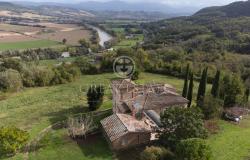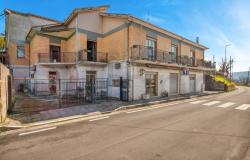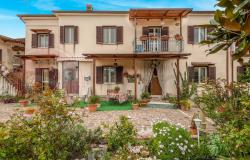The long-lost colours of Rome's famous Ara Pacis were temporarily brought back to life this week thanks to a new virtual reconstruction of how ancient Romans would have seen the monument.
City archaeologists superimposed what they believe were the original dazzling colours of the Emperor Augustus's altar of peace onto one of its marble faces, now white after the pigment has worn off over the centuries.
''It's an extraordinary experiment,'' said Rome cultural heritage supervisor Umberto Broccoli.
''Finally everyone can convince themselves that the marbles of Rome were coloured, that the crowns of the columns were black and the columns were yellow,'' he said.
During the sneak peek back into the monument's colourful past, the altar revealed blue backgrounds and swirling floral motifs in white, yellow and green on two of its lower panels, while figures in the upper panels displaying the founding of Rome were dressed in red-purple togas.
''We wanted to treat the Ara Pacis like a beautiful woman,'' said Michel Hill, one of the team involved in the experiment.
''The light had to caress her like a silk veil or the light of a full moon. I think the magic of the light has reawoken the monument,'' he added.
Most scholars now agree that Roman statues and triumphal arches that survive today in white marble were once highly coloured, like the frescoes decorating the walls of Roman houses.
According to Vatican Museums Director and co-organiser of the project, Antonio Paolucci, traces of red ochre and gold plating were found on the Ara Pacis in the 1930s, from which the experts have reconstructed the ancient palettes.
The altar's colours were unveiled to celebrate the birthday of the Emperor Augustus, September 23, 63 AD, but will not be seen again until December 2009, when they will be made a permanent feature in the Ara Pacis Museum.
The altar was commissioned in 13 BCE to celebrate peace throughout the Roman Empire.
It was completed in 9 BCE, 23 years before Augustus's death at the age of 76 in 14 CE (AD).
It shows the architectural hub of Ancient Rome, circled by a bas relief of a procession of peace showing Aeneas, the Earth, Italy and Rome, and marked the first emperor's victorious return from Spain and Gaul and celebrated the peace he had restored to the empire.










